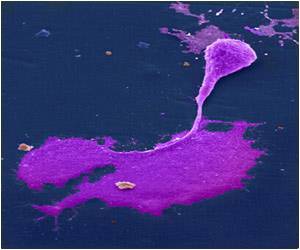The mechanism by which tumor cells change their appearance to adapt to new environmental circumstances has been identified by researchers.

"We have discovered that some microRNAs, a group called microRNA-200S, undergoes a chemical inactivation and inhibit their expression. When these cellular appearance drivers are not present, tumour cells change, stretch, stop their inhibition and thus the tumour progresses", explains Dr. Esteller, adding that "the results from research show that this is a very dynamic process."
Change involves from the appearance of the tumour to the onset of metastasis, but if we change the environmental circumstances that influence these cells, the process reverses.
Dr Esteller compares the process "with a small planet in Darwinian evolution but in an expedited manner."
Besides serving to better understand the disease, the results are important because they predict that external intervention is possible in the process.
The study has been published in the online version of the international scientific journal Oncogene, Nature group.
Advertisement















